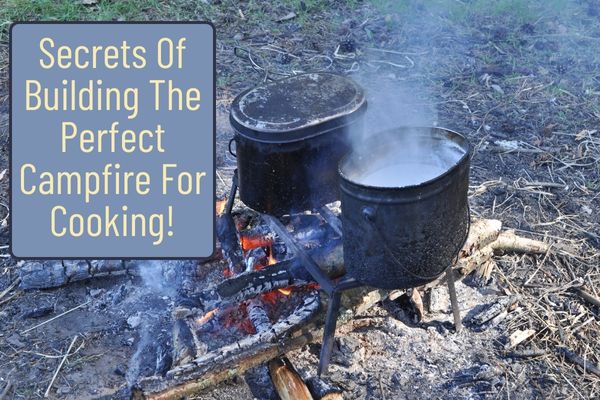A “Bug-In” May Be Your Best Choice If Emergency Strikes
Bugging in is the serious business of hunkering down inside your home during an emergency situation.
Planning for a bug in is just as important as planning a bug out.
Reasons to Bug-In
When I contemplate bugging in, at first, it feels like a relief to not have to grab my packed bugout bag and run for cover. However, a bug-in is not exactly like being surrounded by the comforts of home.
The power, electricity, and water could be turned off or, you could be deathly sick during a pandemic, unable to leave the home because of a mandatory quarantine. During a natural disaster such as a hurricane, flooding could be infiltrating your home’s first floor and basement. You may have to seek a higher level of your home to bug-in. On the same note, a tornado could be approaching, and should you not have an underground storm shelter or basement, you’d have to cram your entire family and pets in an interior room without windows. Your home’s bathroom may be your only safe space, far from the comfort of home.
Benefits of a Bug-In
Preppers know the importance of storing prepping essentials in an easy to access closet, basement, room, or garage. So, during a bug-in situation, you have to locate those items to an area in your home deemed the safest. A bug-in at home also offers some sense of familiarity to you and your family. In other words, you’re not packing up the car or walking in the middle of night evacuating to unfamiliar territory.
Creating a Bug-In Plan
You can’t beforehand how a disaster will play out. However, consider the different types of emergency situations and the potential catastrophes that you could be faced with. Make a plan that would help those in your household survive for one week or one month. Then, as you prepping proceeds, you can add essentials to last for upwards of one year. Hope for a quick resolution to an emergency, but plan for as much as possible.
Consider these prepping essentials:
:: Shelter
:: Water
:: Food
:: First aid
:: Power sources
:: Communication
:: Light sources
:: Home security/weapons
When your bug-in plan is comprehensive, share the plan with mature members of your household. You want to ensure that your loved ones don’t immediately panic when disaster strikes but instead take comfort that you have done due diligence planning and prepping for just such a day. Your bug-in plan can help to alleviate the stress – and even panic – that an emergency situation can create and aid your survival efforts.
Also, you may not even be home when a bug-in situation occurs. It’s important that your family knows the bug-in plan, to spring into action until you arrive home to take the lead.
Bug-In Shelter
Whether you live in a house, an apartment, or a recreational vehicle, you can’t assume that you’ll have free reign of the space. It’s important that you create a “safe area” or a “safe room.” It’s best to select a room with no windows. If there are windows, cover the windows as best as possible. This room is where you’ll store your prepping supplies.
If your bug-in situation is during or after a natural disaster like a hurricane, tornado, earthquake, or a Nor’easter, you should continually evaluate the home’s structure for damages. If the power has not been cut off, consider manually turning off the power in the event of flooding. If the structure is compromised, you may need to bug out, not bug-in. Safety should be your number one concern.
As part of your prepping supplies, be sure you have multiple tarps to cover any damaged areas. Tarps can also be used if you need to bug out, to create tent-like structures with added rope and sticks.
Water For Bug-In at Home
Water is an important essential if you’re faced with a bug-in situation. Experts suggest that you store at least one month of water supply based on the number of people in the home. You may have cases of water in your prepping supply and that’s great. However, what happens during a longer emergency when the bottled water runs out? Even worse, what happens when the water line to your home is shut off? It is highly recommended that you have backup water sources.
Even if you filled the bathtub with water, it is technically not a clean source of drinking water based on the soap, shampoo, and even the chemicals that you use to clean a tub. With a combination of water filtration and water purification, you can convert tub water, rainwater, or any other water sources, to clean drinking water.
:: Water filtration: The process of removing chemicals, minerals, metals, and biological contamination from water.
:: Water purification: Removes bacteria and other living organisms from water.
There are a variety of ways to filter and purify water. Learning those skills can ensure you have access to clean water for survival during bug-in emergency situations.
Water filter types:
:: Water bottle filters
:: Survival straws
:: Charcoal filters
:: Ceramic filters
Water purification methods:
:: Boiling water
:: UV purifiers
:: Purification tablets
:: Chlorine
:: Bleach
:: Iodine
:: Reverse Osmosis
:: Solar Water Disinfection (SODIS)
Food For Bug-In at Home
When it comes to storing food for a bug-in situation, be ready for a power loss. There’s a chance that no oven, stove, microwave, or refrigerator will be working. To be fully prepared, stock up on non-perishable foods like canned goods, dry goods and other prepared foods.
Just as you will do for water, plan at least for a one-month supply of food to feed each member of the household. Your bug-in food storage should include a mix of canned goods like canned meat, vegetables, fruit, fish, beans, and soups. Also include non-perishable foods like nuts, peanut butter, rice, dry beans, oats, and pasta. Ahead of time you can make and store dehydrated foods like jerky and freeze-dried foods like fruit. Healthy snacks may include protein bars, protein shakes, meal replacement bars, energy bars, and energy beverages. Military MREs are good for long term bug-in situations and ideal to keep among your prepper food stock.
If you’re wondering how you would cook pasta, rice, soups, and other prepped foods without power, be sure to purchase a portable stove like a rocket or wood-burning stove. That way, you can heat up and cook food in addition to boiling water.
Also, remember your family pets will need water and food during a bug-in, as well.
First Aid Essentials
If you had no other choice than to bug-in during an emergency, you most likely would not have the luxury of visiting a medical professional, a hospital, or calling 911 during an emergency. That’s why it’s imperative that you get some training in at least basic first aid. You may be called upon to treat wounds and illnesses in your own home.
In addition to having a fully stocked first aid kit, add these items to your prepping essentials:
:: Prescription medications/antibiotics
:: Acetaminophen
:: Ibuprofen
:: Antihistamines
:: Antiseptics wipes
:: First aid ointment
:: Stomach meds
:: Petroleum jelly
:: Bandages/gauze/band-aids
:: Tourniquets/splints
:: Tweezers
:: Rubbing alcohol
:: Scissors
:: Thermometer
:: Insect repellent
Prep For Weather Conditions
If you’re bugging in during a hurricane, you may need to go outside. So keep rain gear, boots, and umbrellas with your prepper gear. If it’s a cold season, make preparations to keep your family warm with extra blankets, insulated boots, coats, hats, and gloves. If you are lucky enough to have a wood burning fireplace or stove, be sure that you’re stocked with firewood. If the family is sleeping in a safe room, you’ll want to have camping sleeping bags to provide a bit of comfort while resting.
Power and Light Sources
During a power outage, you’ll need to find alternate ways to charge your mobile phones and other devices, in addition lights for nighttime use and windowless safe spaces. A gas generator is an expensive purchase but can prove to be a worthy investment during an emergency situation. The drawbacks are that it will require fuel to operate, it must be placed outdoors away from the house, and generators are noisy. Solar generators are also popular among the prepper community.
Power sources:
:: Gas generator/fuel for generator
:: Battery-operated power supply
:: Solar generator
:: Solar panels
To prepare your home to bug-in while experiencing a power loss, you’ll want to have multiple light sources. For example, consider purchasing one flashlight for each person and each room. Be sure that all flashlights have working batteries and stock up on spare batteries.
Light sources:
:: Tactical flashlights
:: Solar powered flashlights
:: Hand-crank flashlights and lanterns
:: Wax candles
:: Battery operated candles
:: Solar lights
:: Headlamps
:: Glowsticks
Be sure your prepper supply includes fire starter rods or matches to light candles.
Alternate Communication Methods
Without a power source, you will not be able to charge mobile devices. It may sound old school, but you may have to rely on a radio to stay informed about a disaster situation.
Prepper communication devices:
:: Hand crank AM/FM radio
:: Solar powered radio
:: HAM radio
:: Walkie talkies
Home Security/Weapons
Depending on the disaster situation, you may need to protect your home, your loved ones, and your prepper supply. Law enforcement agencies most likely will not be available to assist and protect all residents of a community during a widespread emergency.
To keep looters out, be sure that your doors and windows are locked and if you feel the need to block those areas, do that as well. Install a home alarm system and add outdoor motion detector lights and surveillance cameras.
Take the necessary training to be prepared to apply self-defense. If you want, you can store weapons (guns, knifes, stick, or bats) within reach in important rooms and areas. Most importantly, be sure you receive the proper training/certification, so you know how to use weapons if needed.
Prepper Tools
Bugging in at home may allow you access to a fully stocked toolbox in your garage or basement but it’s good to keep a few essential tools in your safe space.
Versatile tools:
:: Multi-purpose tool like a Swiss Army Knife
:: Hammer
:: Folding saw
:: Shovel
:: Duct tape/electrical tape
Start Prepping Your Home For a Bug-In Today
A good prepper prepares for both bug-in and bugout disaster scenarios. The more you prepare now, the better prepared you will be for whatever emergency unexpectedly arises.




